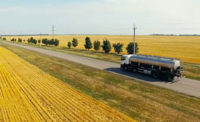Sustainability is dairy executives’ greatest concern
McKinsey & Co./IDFA survey reveals a plethora of interesting information.

Photo courtesy of kazuma seki via gettyimages.com.
During our annual Sustainability Issue, it is a great time to talk about a report released by McKinsey & Co. and the International Dairy Foods Association (IDFA).
In fact, I am going to devote all of my space this month to this survey, as it provides a tremendous wealth of information. The report, titled “What is Top of Mind for Dairy Executives in 2024?,” by Rudolf Henkell-von Ribbentrop, Ludovic Meilhac, and Emmy Moore, goes well beyond sustainability.
But let’s start with the main findings. “[Our] previous survey showed that concerns were divided between growth, resilience, and sustainability, but sustainability has moved to the center of the conversation,” the report reveals. “We have seen progress on sustainability commitments and actions, but challenges with addressing farm-level emissions remain. Other findings indicate that although there is much work to be done, dairy executives are optimistic about the future of the industry.”
Executives surveyed expressed excitement about many aspects of the dairy industry, from international opportunities to novel technologies. A few specific topics that stood out were growth, product nutrition, and innovation.
“Dairy executives were most excited about growth, including growth in the industry, companies, and consumer demand. More than half of the executives we interviewed talked about the potential for growth, and more than 40% cited growth as their top source of excitement,” the research notes.
Almost 30% of dairy executives interviewed were most excited about the nutrition or “goodness” of their products, from the high nutrient density of yogurt to the vast potential for dairy protein ingredients.
“In addition, one-third of the executives we interviewed were excited about product innovations that allow them to better harness the nutrition of dairy,” the report relays. “Excitement about innovation is not new. As far back as the 2018 Executive Sentiment Survey, product innovation was the second-most-cited response to the question, ‘What do you believe is your company’s top source of competitive advantage?’”
Conversely, when asked what keeps them up at night, executives were most likely to cite sustainability (19% of interviewees). About three-quarters of survey respondents said their sustainability efforts are motivated by their customers (retailers and other dairy vendors), and just under half said the same of consumers.
“However, interviewed executives said that consumers may not be willing to pay more for sustainable products, raising concerns about the costs associated with decarbonization and other sustainability initiatives. Still, some signals suggest that ESG (environmental, social, and governance) could be growing in importance for consumers,” the report says.
There is great progress in the reduction of the carbon intensity of dairy, the report adds. “In the United States, emissions per kilogram (kg) of milk dropped by 27% from 1995 to 2015, from 0.75 kg CO2 equivalent (CO2e) per kg of milk to 0.55 kg CO2e per kg of milk. However, U.S. dairy production has outpaced this rate of change (a 34% increase over the same period to 208 billion pounds), resulting in increased emissions overall,” the McKinsey and IDFA study reveals.
To build and enact sustainability strategies, almost 90% of the surveyed dairy companies currently have a sustainability or ESG lead on staff. Of these leads, 77% are dedicated full-time employees, up from about 60% percent in 2022, the report states.
“Alongside sustainability, companies are taking steps to address labor needs and a challenging inflationary environment, which will likely remain necessary for the foreseeable future,” the report states.
In the future, dairy executives should consider focusing on the following areas, the survey suggests:
- “A path to net zero, including measuring and addressing Scope 3 emissions, is complex. Meeting the dairy industry’s goal of net zero by 2050 will require industry-wide alignments and meaningful actions, such as working with farms to reduce emissions via initiatives like manure management or novel feed additives. Companies can help push the industry forward by building out transparency and measurement capabilities, such as via integrated enterprise resource planning systems (ERPs).
- The forces pushing sustainability in the industry include consumer preferences, shareholder and lender pressure, and regulatory action. Companies should carefully track shifts across these dimensions and stay ahead of trends and requirements.
- The labor market is shifting. Taking steps to appeal to the current generation of workers will be critical. This may include offering flexible work schedules and staying up to date on best-in-class benefit offerings.”
The dairy industry has an opportunity to seize the moment and develop a more sustainable approach to dairy production, the report concludes. “Global pushes such as the newly announced Dairy Methane Action Alliance, requirements from shareholders and retailers, and consumer preferences mean that the time is now for the dairy industry to develop a unified plan to tackle some of its biggest sustainability obstacles. If leaders can lean into innovations and make progress on emissions, they can set themselves up well in the years to come.”
Looking for a reprint of this article?
From high-res PDFs to custom plaques, order your copy today!






